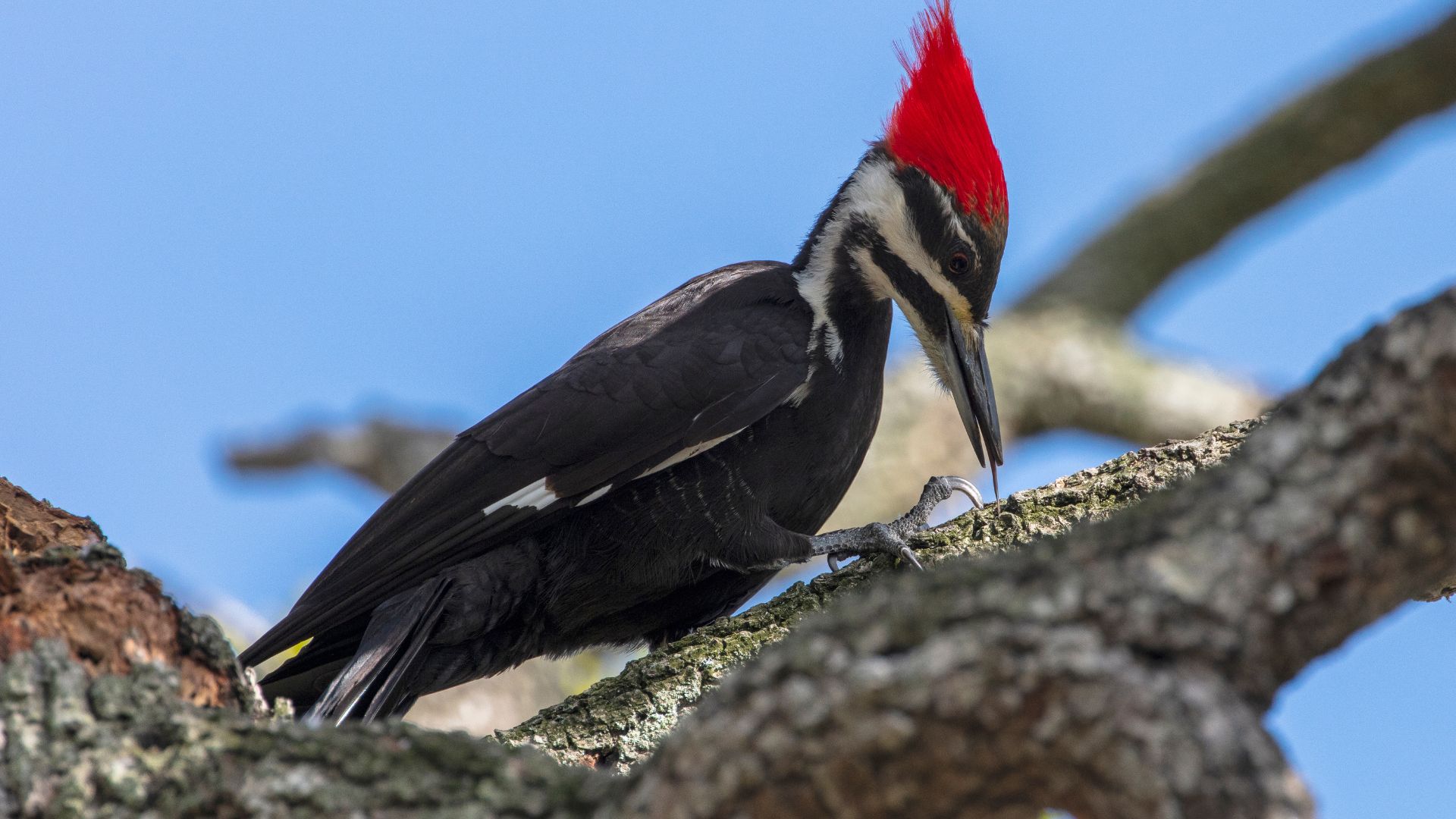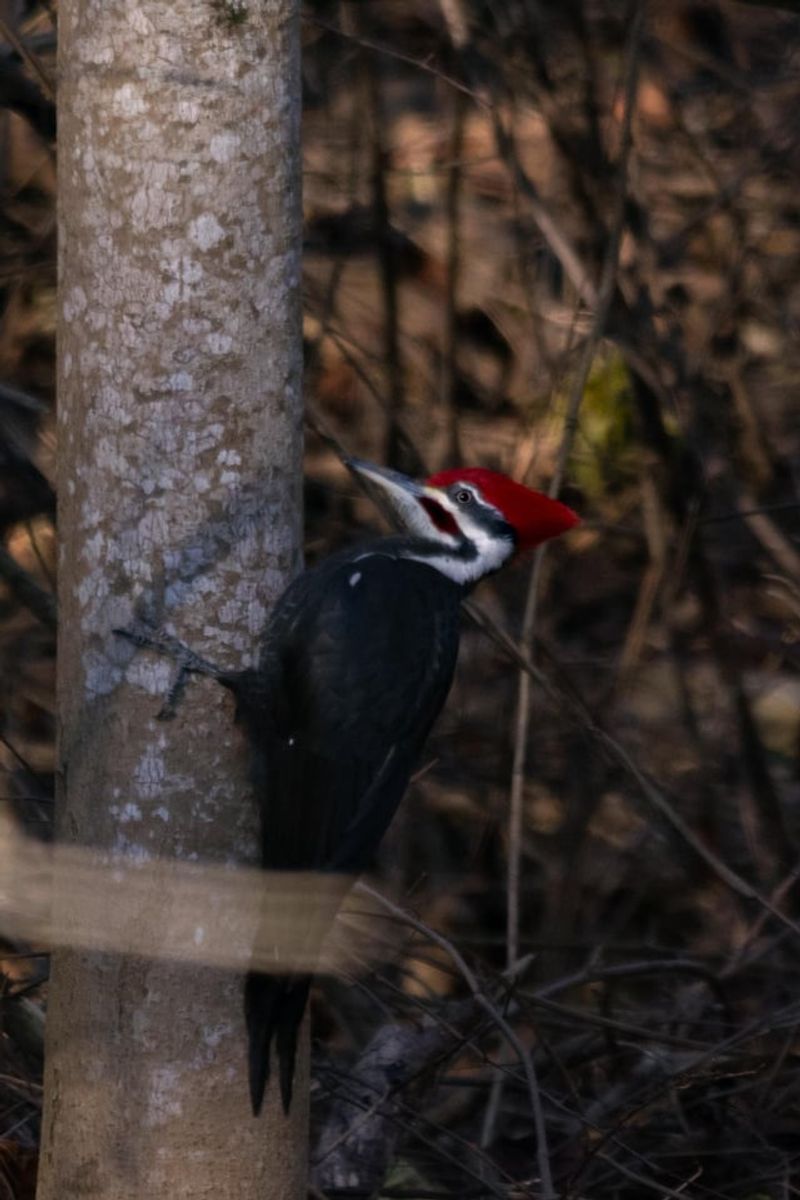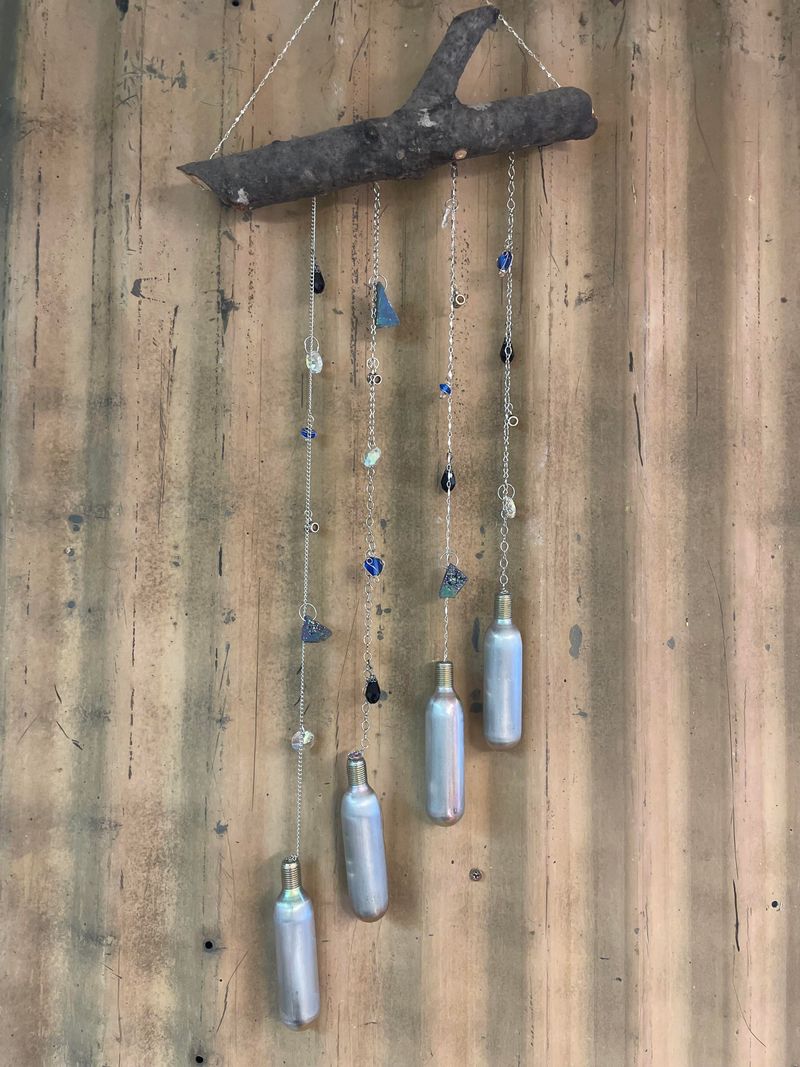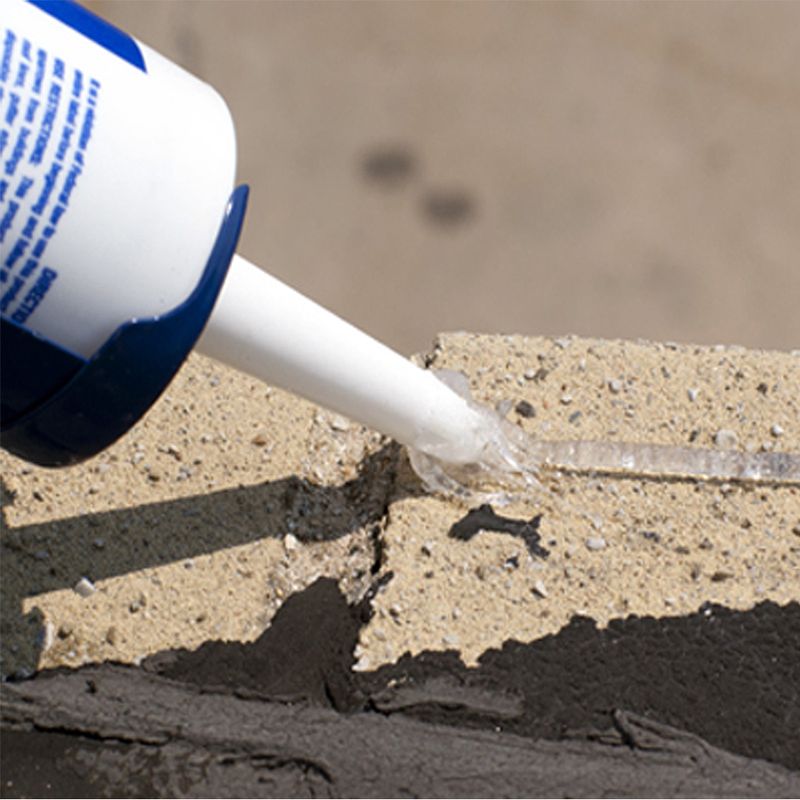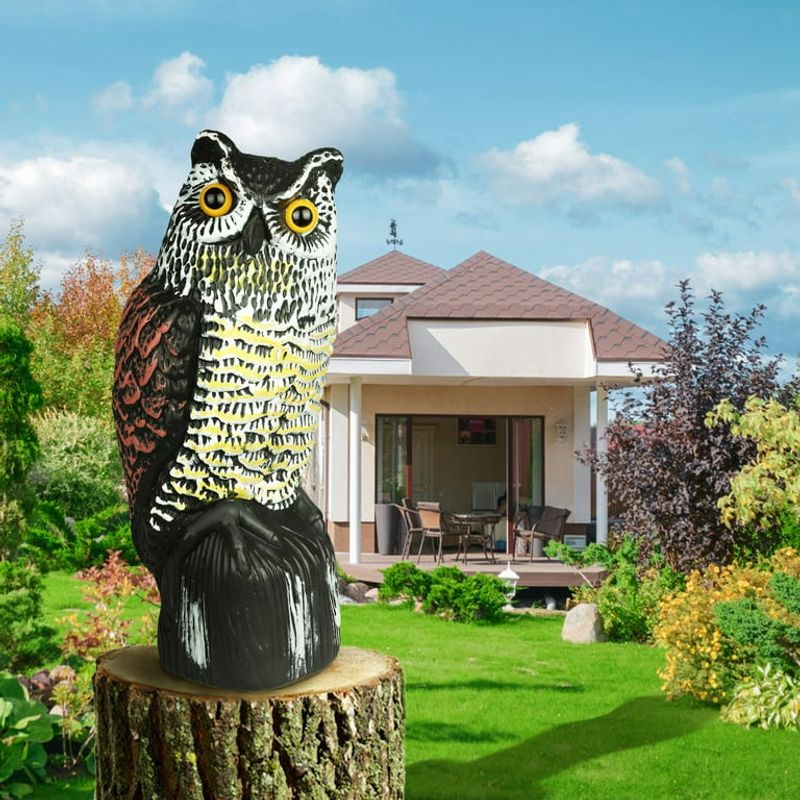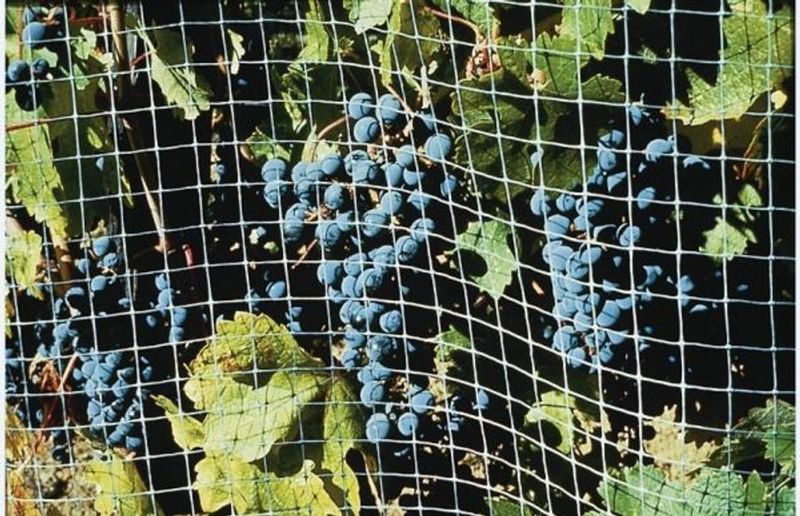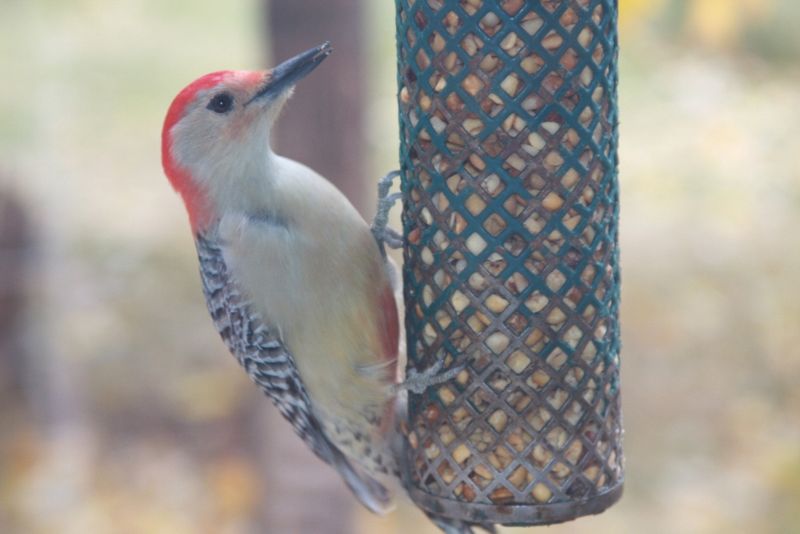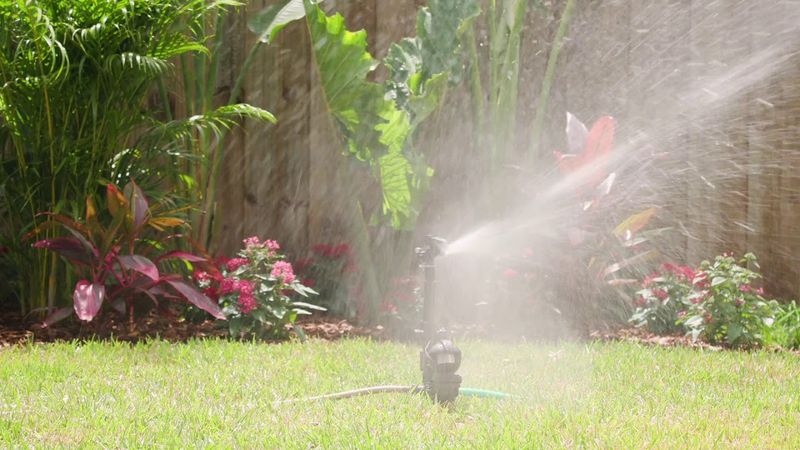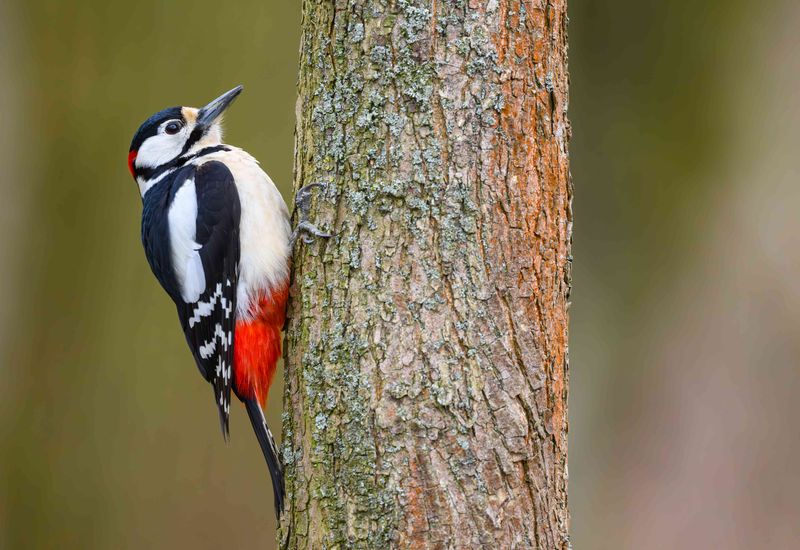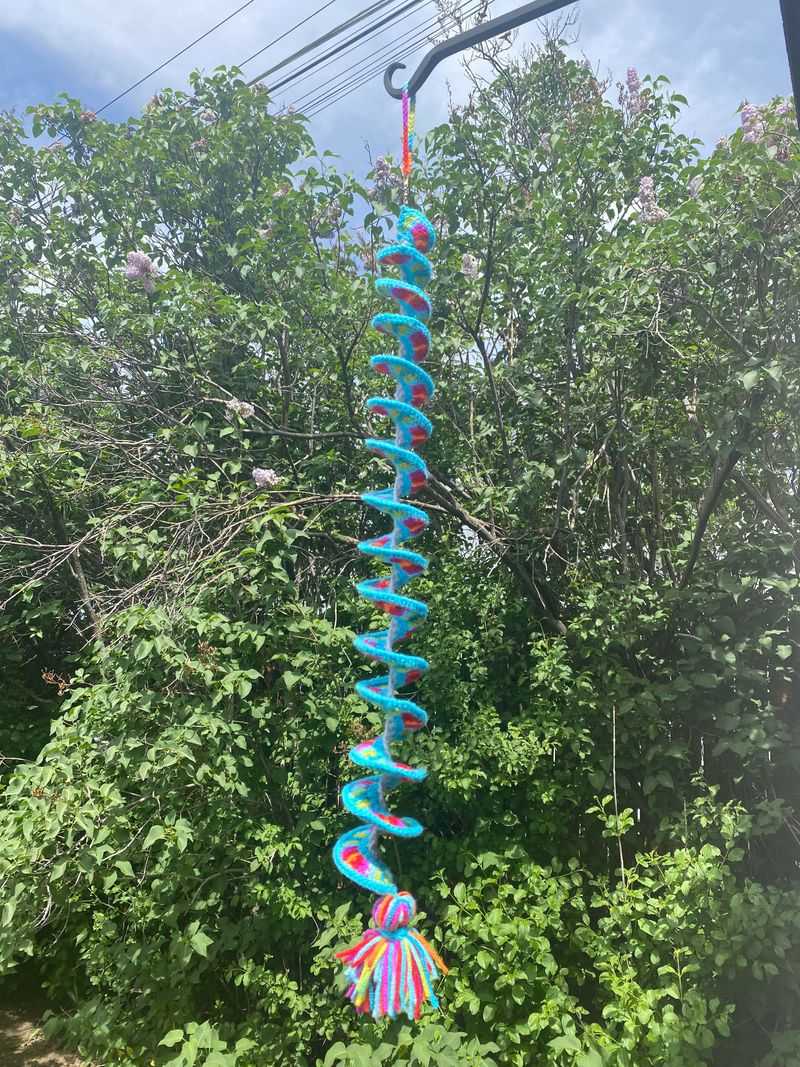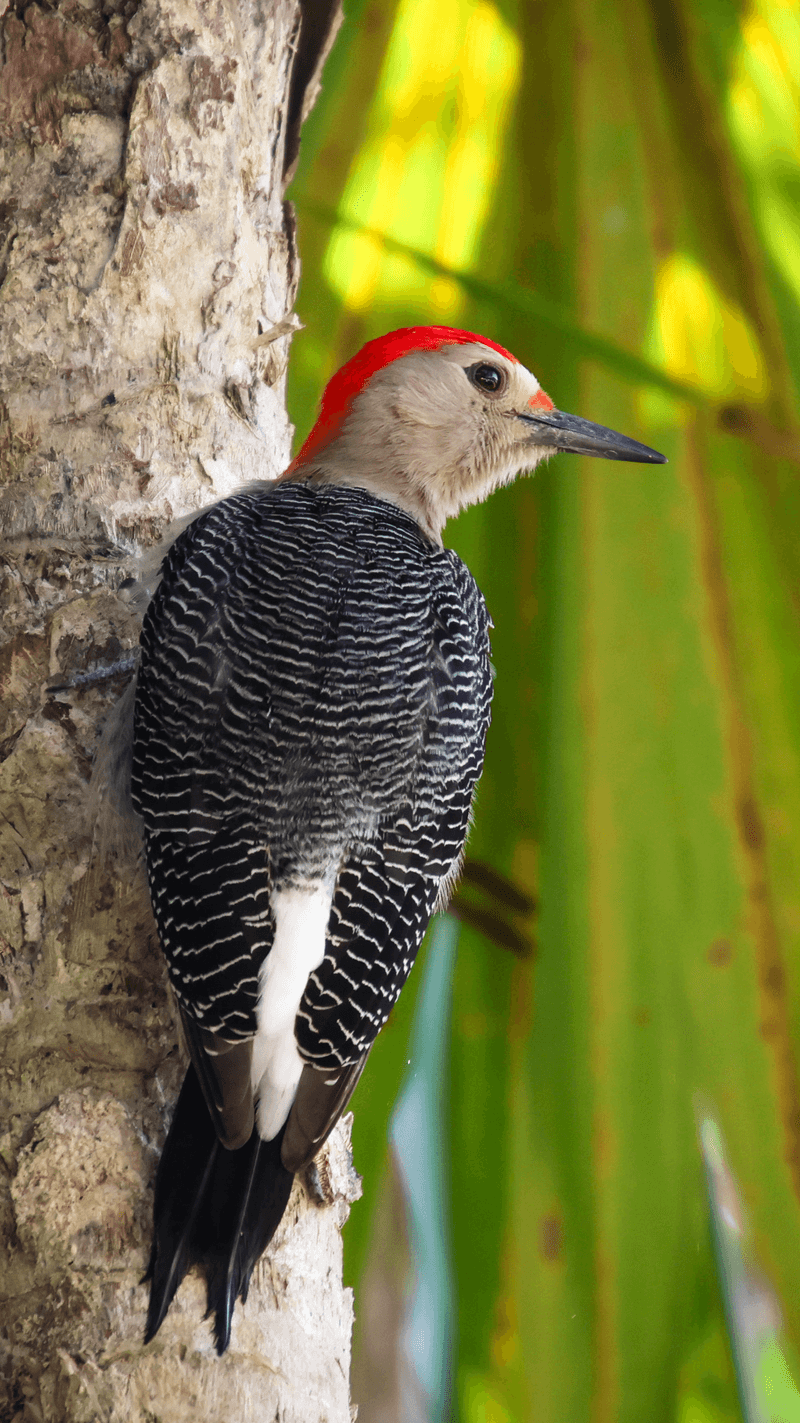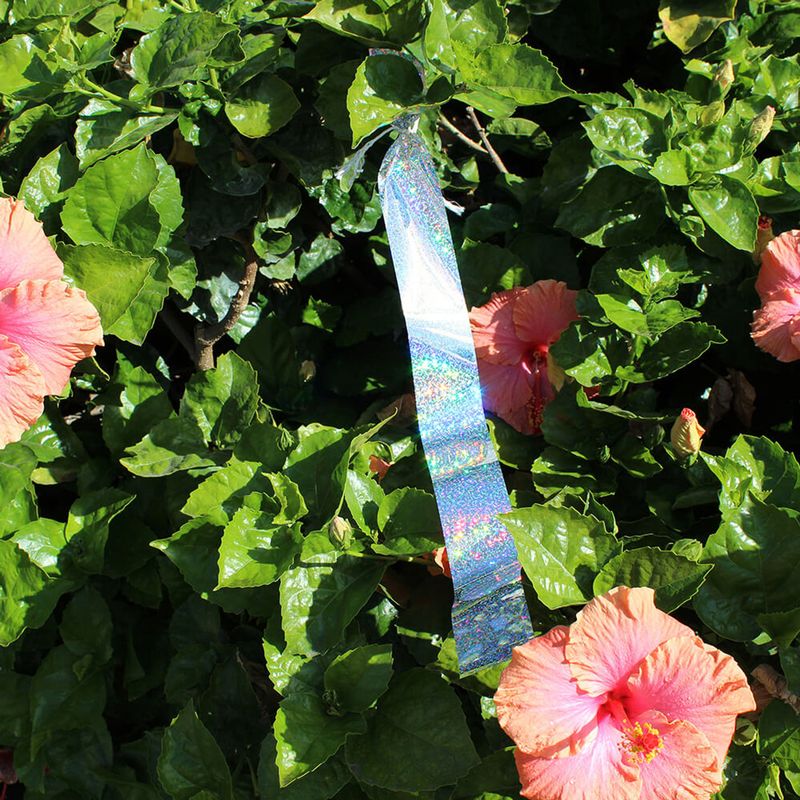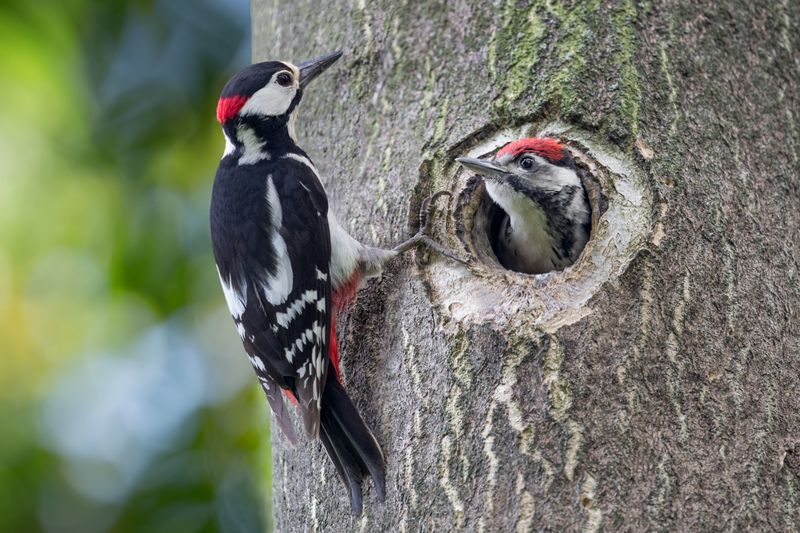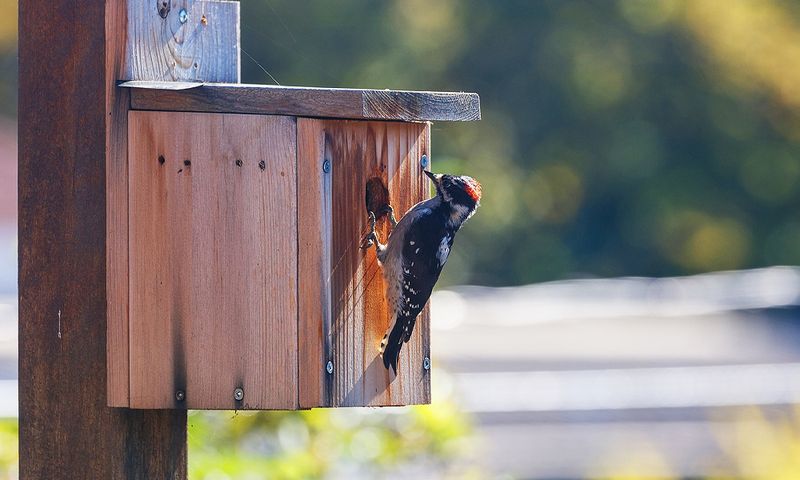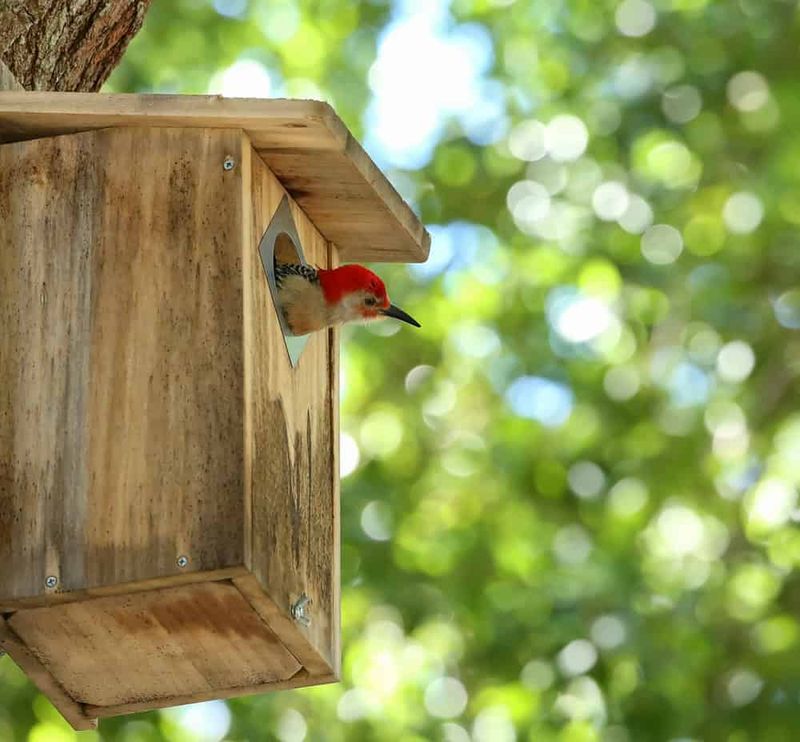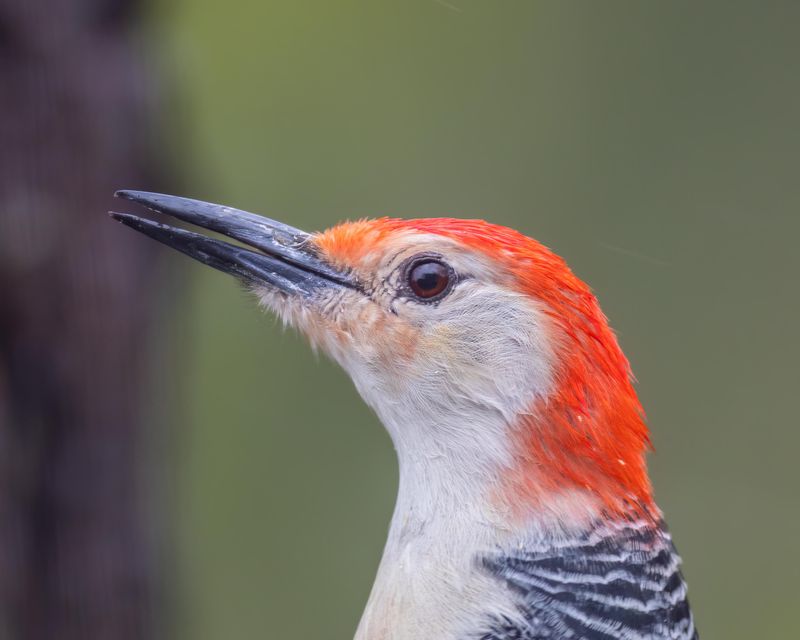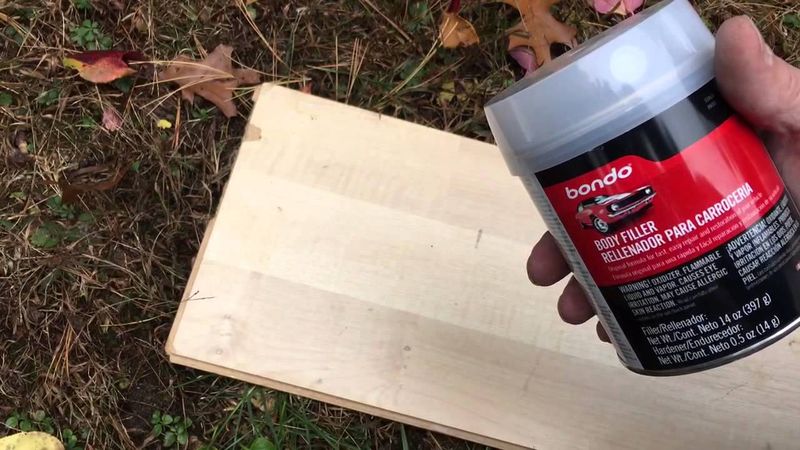Woodpeckers might be pretty to watch, but when they start hammering away at your trees, wooden fences, or garden features, it can get really frustrating. I’ve been there—listening to that constant drumming can drive you crazy, especially when it’s causing damage.
These birds aren’t just being noisy for no reason; they’re usually hunting for insects, making nests, or marking their territory. Knowing why they’re here helps you figure out how to gently encourage them to move along without hurting them.
If you’re fed up with the noise and damage but want to keep the woodpeckers safe, there are some expert tips that really work. With the right approach, you can protect your garden while still respecting these fascinating birds.
1. Hang Shiny Objects
Old CDs, aluminum foil strips, or reflective tape create flashes of light that woodpeckers find disorienting. The unpredictable reflections make your garden feel unsafe to them, encouraging them to find a more suitable location.
I hung a few old CDs near my damaged fence last spring after trying several other methods with no success. The constant movement and light flashes seemed to do the trick within days.
For best results, place these reflective objects where they’ll catch the most sunlight and can move freely in the breeze. Replace them occasionally as they become weathered or less effective.
2. Install Wind Chimes
The random, unpredictable sounds of wind chimes create an environment woodpeckers find unsettling. Metal chimes work particularly well because they produce sharp, clear tones that cut through ambient noise.
My neighbor struggled with woodpeckers damaging her cedar siding until she hung three different sets of wind chimes around her property. The combination of sound and movement significantly reduced woodpecker activity.
Strategic placement is key – hang them near areas with previous woodpecker damage or in locations with vulnerable wooden structures.
3. Apply Bird Repellent Gel
Non-toxic, sticky repellent gels create an uncomfortable surface that woodpeckers avoid landing on. These commercial products remain effective for several months, even through light rain and changing weather conditions.
After trying numerous deterrents on my garden pergola, this gel was what finally worked. The clear formula is barely noticeable but creates a tacky surface birds immediately dislike.
Apply the gel in thin strips along areas where woodpeckers have shown interest. Remember to reapply according to product instructions, typically every few months or after heavy rainfall.
4. Set Up Predator Decoys
Realistic owl or hawk decoys tap into woodpeckers’ natural fear of predators. The silhouette alone can be enough to make woodpeckers think twice about visiting your garden.
The key is movement – static decoys quickly lose effectiveness as birds realize they pose no actual threat. I’ve found that models with movable wings or heads that shift in the wind work much better than stationary versions.
Relocate your decoys every few days to maintain the illusion. This simple change prevents woodpeckers from becoming accustomed to seeing the predator in one predictable location.
5. Create Visual Barriers With Netting
Fine mesh netting creates a physical barrier that prevents woodpeckers from reaching vulnerable wooden surfaces. The lightweight material is barely visible from a distance but effectively blocks access to potential drumming spots.
When woodpeckers targeted my newly installed garden trellis, I stretched bird netting about two inches away from the wood. They couldn’t land properly or reach the surface, so they quickly abandoned their efforts.
Secure the netting firmly at all edges while maintaining a small gap between it and the protected surface. This prevents birds from clinging to the wood through the mesh.
6. Use Electronic Sound Deterrents
Motion-activated sound devices emit distress calls or predator sounds when woodpeckers approach. These high-tech solutions are particularly effective because they only activate when needed, preventing birds from becoming accustomed to constant noise.
A gardening friend installed one after suffering extensive damage to her wooden fence. The random timing of the sounds kept woodpeckers guessing and uncomfortable, resolving her problem within a week.
Look for models with adjustable volume and sensitivity settings to avoid disturbing neighbors. Many newer versions also include visual deterrents like flashing lights for enhanced effectiveness.
7. Wrap Vulnerable Trees
Burlap, hardware cloth, or plastic mesh wrapped around tree trunks creates a barrier woodpeckers can’t penetrate. This method is especially useful for protecting younger trees with thin bark that are particularly vulnerable to woodpecker damage.
The trick is leaving a small gap between the wrapping and the bark. My prized Japanese maple was being decimated until I installed quarter-inch hardware cloth around it with spacers to keep it from touching the trunk.
Check wrapped trees regularly to ensure the covering isn’t restricting growth or causing unintended damage. Remove temporarily during growing seasons if necessary.
8. Install Motion-Activated Sprinklers
Sudden bursts of water startle woodpeckers and discourage them from returning to your garden. These clever devices detect movement and release a quick spray that’s harmless but effectively teaches birds to avoid the area.
After installing one near my damaged garden shed, I watched a woodpecker get sprayed, fly away in surprise, and not return for weeks. The unexpected water creates an unpredictable environment that woodpeckers prefer to avoid.
Position sprinklers to cover problem areas without wasting water on pathways or other garden features. Many models allow you to adjust sensitivity and spray patterns for optimal coverage.
9. Paint Structures With Metallic Paint
Metallic or iridescent paint additives create reflective surfaces that disorient and deter woodpeckers. The shifting colors and reflections as light hits the surface from different angles make it difficult for birds to feel comfortable.
My garden arbor was a favorite drumming spot until I repainted it with a subtle metallic finish. The woodpeckers seemed confused by the unusual visual effect and stopped visiting within days.
Choose paint colors that complement your garden while incorporating metallic elements. Even a slight iridescent quality can be effective while maintaining aesthetic appeal.
10. Create Noise With Wind Spinners
Decorative metal wind spinners produce vibrations and subtle sounds that discourage woodpeckers. These garden ornaments serve double duty – they’re visually appealing while creating an environment that makes woodpeckers uncomfortable.
The combination of movement, reflection, and gentle noise has proven remarkably effective in my experience. I placed several copper spinners near a damaged fence panel, and woodpecker activity ceased almost immediately.
Choose spinners with multiple moving parts for maximum effect. The unpredictable motion and sound patterns prevent birds from becoming accustomed to their presence.
11. Offer Alternative Food Sources
Suet feeders placed away from vulnerable areas can redirect woodpeckers’ attention. This approach acknowledges that these birds are valuable garden allies that control insect populations while minimizing damage to structures.
When I started offering suet in the far corner of my yard, woodpeckers gradually shifted their activities away from my wooden pergola. They still visit daily, but now focus on the feeder instead of drumming on my structures.
Choose feeders specifically designed for woodpeckers with tail props and sturdy perches. Place them at least 30 feet from areas you want to protect.
12. Apply Visual Scare Tape
Holographic scare tape creates disorienting light patterns and noise that woodpeckers find threatening. The material flashes dramatically in even slight breezes, creating an environment that feels unsafe to birds.
I was skeptical until trying this tape around my garden shed eaves. The constant movement and iridescent reflections seemed to genuinely confuse the woodpeckers that had been damaging the wood for weeks.
Cut strips of varying lengths (18-36 inches) and hang them where they’ll move freely. The unpredictable motion and light patterns prevent birds from becoming accustomed to their presence.
13. Install Physical Barriers
Plastic sheeting or hardware cloth mounted slightly away from wood surfaces prevents direct access. The gap is crucial – woodpeckers can’t get a foothold or reach the wood to drum or drill.
This method saved my ornamental cherry tree after a persistent woodpecker began creating holes in the trunk. I created a cylinder of plastic mesh around it with small spacers, and the bird immediately lost interest.
For structures, attach barriers securely while maintaining that critical half-inch gap. The visual deterrent combined with the physical impossibility of reaching the wood is remarkably effective.
14. Apply Woodpecker-Specific Repellent Spray
Commercial repellent sprays containing methyl anthranilate create tastes and smells woodpeckers avoid. This grape-derived compound is harmless but creates sensory discomfort that drives birds away from treated areas.
After trying numerous homemade solutions without success, this spray finally solved the woodpecker problem on my garden shed. The birds would land, take one taste, and immediately leave without returning.
Reapplication is necessary after heavy rain or every few weeks. Look for environmentally friendly formulations that won’t harm plants or beneficial insects in your garden.
15. Create Distraction With Scattered Mirrors
Small garden mirrors positioned strategically create unexpected reflections that confuse and deter woodpeckers. The random flashes of light and movement make birds feel watched and unsafe in your garden space.
This old-fashioned technique surprised me with its effectiveness. I mounted several small dollar-store mirrors at different angles near my problem areas, and woodpecker activity dropped dramatically within days.
Angle mirrors to catch maximum sunlight and create unpredictable reflections. The key is random placement – woodpeckers quickly ignore predictable patterns but remain wary of seemingly random movement.
16. Attract Natural Predators
Installing nesting boxes for hawks or falcons creates natural woodpecker deterrents. These predator birds rarely actually catch woodpeckers but create an environment where woodpeckers feel unsafe and avoid lingering.
When a pair of kestrels took up residence in the nesting box I installed, woodpecker damage to my property virtually disappeared. Their occasional flights around the garden were enough to keep woodpeckers away.
Research appropriate nesting box designs for predator birds in your region. Position boxes in open areas with good visibility to increase the chances of attracting these beneficial birds.
17. Create Tactile Deterrents
Attaching rough-textured materials like sandpaper or plastic spikes makes surfaces uncomfortable for woodpeckers to land on. These tactile deterrents don’t harm the birds but make it physically difficult for them to gain purchase.
This approach saved my cedar garden shed after multiple other methods failed. I attached strips of coarse sandpaper to the corners and edges where woodpeckers frequently landed, and they quickly abandoned their efforts.
Focus on landing zones rather than covering entire structures. Woodpeckers typically land in specific spots before beginning to drum or drill, making targeted deterrents highly effective.
18. Fill Existing Holes Properly
Repairing woodpecker damage with wood putty and paint eliminates the acoustic properties that attract more drumming. Untreated holes actually invite more damage as woodpeckers are drawn to the hollow sound they produce.
I learned this lesson the hard way after ignoring small holes in my garden pergola. What started as minor damage quickly expanded until I properly filled and sealed each hole with outdoor wood filler and matched the paint.
For tree damage, consult an arborist about appropriate treatments. Some specialized tree wound products allow healing while preventing insect infestation that might attract more woodpeckers.

